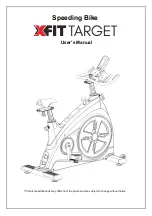
JOHNSON CONTROLS
14
FORM 160.81-O1 (1020)
ISSUE DATE 10/05/2020
SECTION 1 - DESCRIPTION OF SYSTEM AND FUNDAMENTALS OF OPERATION
Technician to reduce over/under-shoot of the Chilled
Liquid setpoint and adapt the control to the local oper-
ating conditions.
The following
Load Limiting
conditions will over-
ride the normal Leaving Chilled Liquid Temperature
control. The message displayed for each condition is in
parenthesis. Refer to DISPLAY MESSAGES section
of this book for details of each limit.
• Low Evaporator Pressure (“Warning – Evaporator –
Low Pressure Limit”)
• High Condenser Pressure (“Warning – Condenser –
High Pressure Limit”)
• High Motor current (“Motor-High Current Limit”)
• Low Discharge Superheat (“Warning – Low Dis-
charge Superheat Limit”)
• High Discharge Pressure (“Warning – Discharge –
High Pressure Limit”)
The slide valve can be manually controlled by a Ser-
vice Technician from the COMPRESSOR screen using
the Keypad keys.
To provide oil cooling, liquid refrigerant is injected into
the compressor during high Discharge Temperature
conditions. When the Discharge Temperature increases
to the programmed Liquid Injection setpoint threshold,
a solenoid valve is opened, injecting liquid refrigerant
into the compressor. This setpoint is programmable by
a Service Technician over the range of 130 to 165°F.
(fixed at 165°F in software version C.MLM.05.03.
xxx) When the Discharge Temperature decreases to
10°F below this setpoint, the solenoid valve is closed.
To prevent overcooling the building or process, the chill-
er will shutdown and display “LEAVING CHILLED
LIQUID – LOW TEMPERATURE” when the Leaving
Chilled Liquid Temperature decreases to less than the
programmed
Leaving Chilled Liquid Temperature
Cycling Offset-Shutdown
setpoint. After it has shut-
down, the chiller is prevented from restarting until the
Leaving Chilled Liquid Temperature has increased to
more than the programmed
Leaving Chilled Liquid
Temperature Cycling Offset-Restart
setpoint. This
prevents short cycling the chiller.
The chiller can cool
WATER
or a
BRINE
solution.
Water can be cooled over a range of 38.0º to 70.0ºF.
If Smart Freeze protection (explained below) is en-
abled, the range is 36.0º to 70.0ºF. Brine solution can
be cooled over a range of 20.0º to 70.0ºF.
Ice Storage
mode is an operating mode within Brine
mode that allows the chiller to make ice at a faster than
normal rate by inhibiting unload pulses to the slide
valve. Load pulses are applied until the Leaving Chilled
Liquid Temperature Cycling Offset-Shutdown thresh-
old is reached, whereupon the chiller shuts down. No
unload pulses or hold outputs are applied to the slide
valve unless any of the following load limit conditions
exist:
• Low Evaporator Pressure
• High Condenser Pressure
• High Motor Current
• Low Discharge Superheat
The chiller will automatically restart when the Ice Stor-
age Restart threshold is exceeded. Ice Storage mode
is turned ON from the EVAPORATOR screen. After it
is turned ON, Ice Storage mode is automatically acti-
vated (inhibits unload pulses) and deactivated (allows
unload pulses) by the value programmed for the Leaving
Chilled Liquid Temperature setpoint. Values less than
or equal to 32.0ºF activates Ice Storage mode. Setpoint
values more than 32.0ºF deactivate Ice Storage mode.
An LED on the EVAPORATOR screen illuminates
when Ice Storage mode is active. This allows the chill-
er to be switched in and out of Ice Storage mode by a
Local or Remote change of this setpoint. This feature
allows the chiller to make ice in the nighttime hours
and perform air-conditioning duty during the daytime
hours simply by changing the Leaving Chilled Liquid
Temperature setpoint. When Ice Storage is turned ON,
there are two different Restart setpoints employed: One
is programmed and will be in effect when the Leaving
Chilled Liquid Temperature setpoint is less than or equal
to 32.0ºF (Ice Storage mode active), the other is pro-
grammed and will be in effect when the setpoint is more
than 32.0ºF (Ice Storage mode not active). Each Restart
setpoint can be programmed to a different value.
Since liquid refrigerant is transferred from the Con-
denser to the Evaporator via the Condenser-Evaporator
pressure differential, a large differential can create an
excess refrigerant level in the evaporator. A small dif-
ferential can result in insufficient level in the Evapora-
tor. To maintain an appropriate refrigerant level in the
Evaporator under all conditions, the chiller is equipped
with a
Variable Orifice
. To maintain an appropriate
refrigerant level in the evaporator under all conditions,
a Variable Orifice is located in the refrigerant line be-
tween the condenser and evaporator.















































